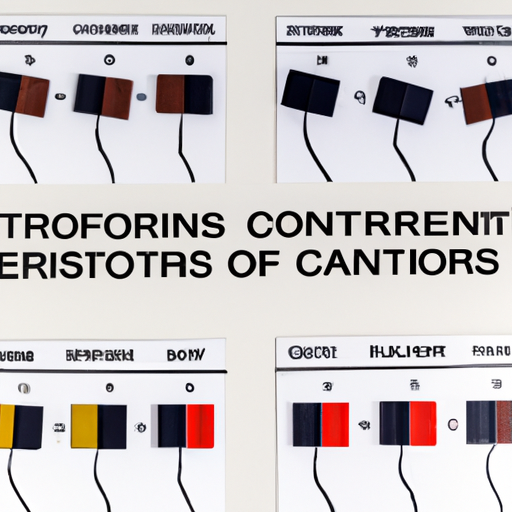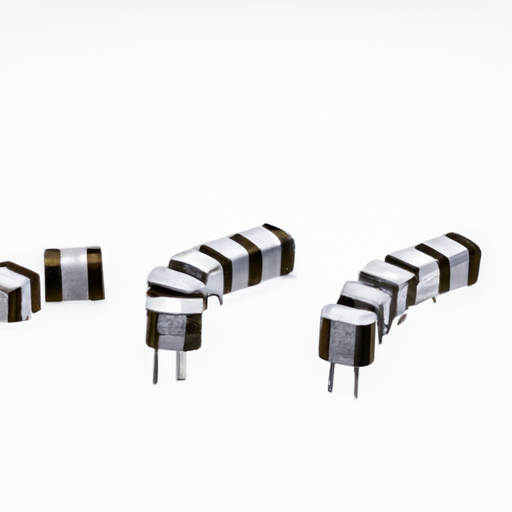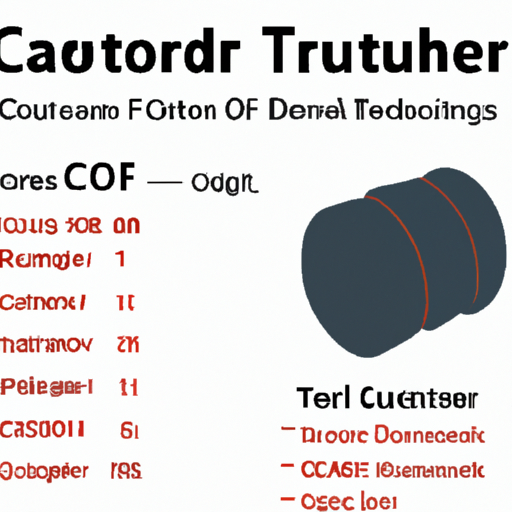Precautions for training symbol products of inductors
Precautions for Training Symbol Products of Inductors
I. Introduction
Inductors are fundamental components in electronic circuits, playing a crucial role in energy storage, filtering, and signal processing. As passive components, they store energy in a magnetic field when electrical current flows through them. Understanding inductors and their applications is essential for engineers and technicians involved in circuit design and analysis. This blog post aims to highlight the precautions necessary for training symbol products of inductors, ensuring that professionals are well-equipped to design effective and safe electronic systems.
II. Understanding Inductors
A. Basic Principles of Inductance
Inductance is the property of an electrical conductor that opposes a change in current. When current flows through an inductor, it generates a magnetic field around it. If the current changes, the magnetic field also changes, inducing a voltage that opposes the change in current. This principle is described by Faraday's law of electromagnetic induction.
B. Types of Inductors
Inductors come in various types, each suited for specific applications:
1. **Air-core inductors**: These inductors do not use a magnetic core, making them suitable for high-frequency applications due to their low losses.
2. **Iron-core inductors**: These inductors use an iron core to increase inductance and improve energy storage, making them ideal for power applications.
3. **Ferrite-core inductors**: Ferrite cores are used in high-frequency applications, providing high inductance with minimal losses.
C. Applications of Inductors in Various Industries
Inductors are widely used in power supplies, radio frequency applications, filters, and transformers. Their ability to store energy and filter signals makes them indispensable in modern electronics, from consumer devices to industrial machinery.
III. Importance of Training Symbol Products
A. Definition of Training Symbol Products
Training symbol products refer to the standardized symbols used to represent inductors and other components in circuit diagrams. These symbols are essential for clear communication among engineers and technicians.
B. Benefits of Using Standardized Symbols in Circuit Design
Standardized symbols ensure that everyone involved in the design and analysis of circuits understands the components being used. This clarity reduces the risk of errors and miscommunication, leading to more efficient and effective designs.
C. Impact on Communication Among Engineers and Technicians
Effective communication is vital in engineering. Using standardized symbols allows for a common language among professionals, facilitating collaboration and reducing misunderstandings in circuit design.
IV. Precautions Before Training
A. Understanding the Specifications of Inductors
Before training on symbol products, it is crucial to understand the specifications of inductors:
1. **Voltage ratings**: Knowing the maximum voltage an inductor can handle is essential to prevent breakdown and failure.
2. **Current ratings**: Understanding the current limits helps avoid overheating and damage to the inductor.
3. **Inductance values**: Familiarity with the inductance values required for specific applications ensures proper component selection.
B. Familiarization with Industry Standards
Familiarizing oneself with industry standards is critical for ensuring compliance and safety:
1. **IEC standards**: The International Electrotechnical Commission (IEC) provides guidelines for electrical components, including inductors.
2. **ANSI standards**: The American National Standards Institute (ANSI) sets standards for various electrical components, ensuring safety and reliability.
C. Safety Considerations
Safety should always be a priority in training:
1. **Electrical safety protocols**: Understanding and following electrical safety protocols can prevent accidents and injuries.
2. **Personal protective equipment (PPE)**: Wearing appropriate PPE, such as gloves and safety glasses, is essential when working with electrical components.
V. Training Methodology
A. Selecting Appropriate Training Materials
Choosing the right training materials is crucial for effective learning:
1. **Textbooks and manuals**: Comprehensive textbooks provide foundational knowledge about inductors and their applications.
2. **Online resources and courses**: Many online platforms offer courses and tutorials on inductors and circuit design.
B. Hands-on Training vs. Theoretical Training
Both hands-on and theoretical training are important:
1. **Importance of practical experience**: Engaging in hands-on training allows learners to apply theoretical knowledge in real-world scenarios.
2. **Simulation tools and software**: Utilizing simulation software can help visualize circuit behavior and test designs without physical components.
C. Engaging with Experienced Professionals
Learning from experienced professionals can enhance training:
1. **Mentorship opportunities**: Finding a mentor in the field can provide valuable insights and guidance.
2. **Networking within the industry**: Building a network of professionals can lead to collaboration and knowledge sharing.
VI. Common Mistakes to Avoid
A. Misinterpretation of Symbols
One of the most common mistakes in circuit design is the misinterpretation of symbols:
1. **Importance of accuracy in symbol representation**: Accurate representation of symbols is crucial for clear communication and effective design.
2. **Consequences of errors in circuit design**: Misinterpretations can lead to circuit failures, safety hazards, and increased costs.
B. Neglecting to Verify Component Specifications
Failing to verify component specifications can result in using inappropriate components, leading to circuit malfunctions.
C. Overlooking the Importance of Testing and Validation
Testing and validation are essential steps in the design process. Neglecting these steps can result in undetected errors and unreliable circuits.
VII. Best Practices for Effective Training
A. Continuous Learning and Staying Updated
The field of electronics is constantly evolving, making continuous learning essential:
1. **Attending workshops and seminars**: Participating in industry events can provide insights into the latest trends and technologies.
2. **Subscribing to industry publications**: Staying informed through publications helps professionals keep up with advancements in the field.
B. Utilizing Simulation Software for Practice
Simulation software allows for experimentation and practice without the risks associated with physical components. This can enhance understanding and confidence in circuit design.
C. Encouraging Collaboration and Discussion Among Peers
Collaboration fosters a learning environment where ideas can be shared, and challenges can be addressed collectively. Encouraging discussion among peers can lead to innovative solutions and improved designs.
VIII. Conclusion
In conclusion, training on symbol products of inductors is a critical aspect of circuit design that requires careful consideration and precautions. Understanding the principles of inductance, familiarizing oneself with industry standards, and prioritizing safety are essential steps in the training process. By avoiding common mistakes and adopting best practices, engineers and technicians can enhance their skills and contribute to the development of effective and safe electronic systems.
As the field of electronics continues to evolve, it is imperative for professionals to prioritize safety and accuracy in their training efforts. By doing so, they can ensure that they are well-prepared to tackle the challenges of modern circuit design and contribute to the advancement of technology.
IX. References
1. "The Art of Electronics" by Paul Horowitz and Winfield Hill
2. "Inductor Design Handbook" by Colonel Wm. T. McLyman
3. IEC 60076 - Power Transformers
4. ANSI/IEEE C57.12.00 - Standard for Transformers
5. Online resources such as Coursera, edX, and industry-specific webinars.
By following the guidelines and precautions outlined in this blog post, engineers and technicians can enhance their understanding of inductors and their applications, leading to more effective and reliable circuit designs.






